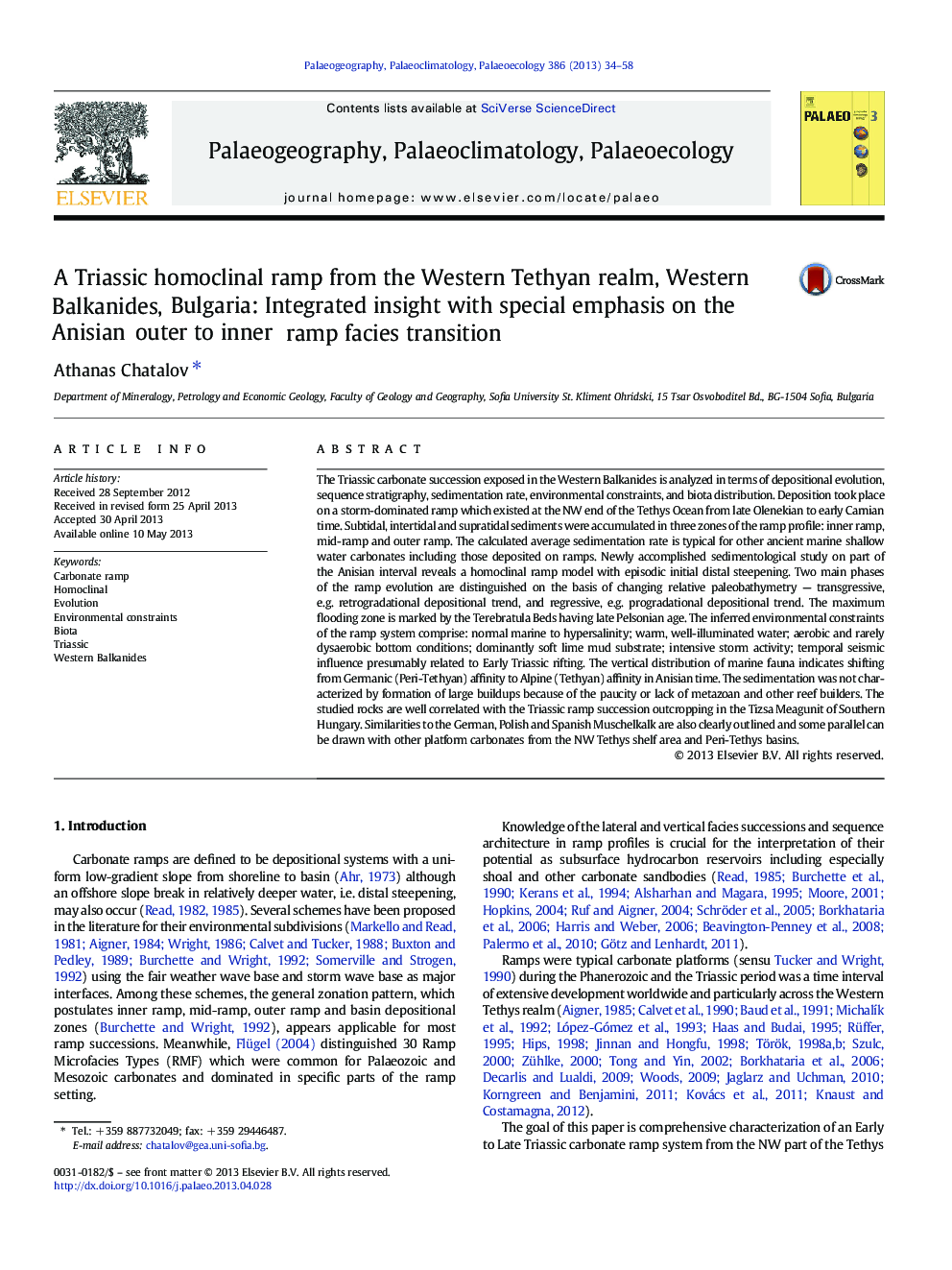| کد مقاله | کد نشریه | سال انتشار | مقاله انگلیسی | نسخه تمام متن |
|---|---|---|---|---|
| 6350292 | 1622203 | 2013 | 25 صفحه PDF | دانلود رایگان |
عنوان انگلیسی مقاله ISI
A Triassic homoclinal ramp from the Western Tethyan realm, Western Balkanides, Bulgaria: Integrated insight with special emphasis on the Anisian outer to inner ramp facies transition
دانلود مقاله + سفارش ترجمه
دانلود مقاله ISI انگلیسی
رایگان برای ایرانیان
کلمات کلیدی
موضوعات مرتبط
مهندسی و علوم پایه
علوم زمین و سیارات
فرآیندهای سطح زمین
پیش نمایش صفحه اول مقاله

چکیده انگلیسی
The Triassic carbonate succession exposed in the Western Balkanides is analyzed in terms of depositional evolution, sequence stratigraphy, sedimentation rate, environmental constraints, and biota distribution. Deposition took place on a storm-dominated ramp which existed at the NW end of the Tethys Ocean from late Olenekian to early Carnian time. Subtidal, intertidal and supratidal sediments were accumulated in three zones of the ramp profile: inner ramp, mid-ramp and outer ramp. The calculated average sedimentation rate is typical for other ancient marine shallow water carbonates including those deposited on ramps. Newly accomplished sedimentological study on part of the Anisian interval reveals a homoclinal ramp model with episodic initial distal steepening. Two main phases of the ramp evolution are distinguished on the basis of changing relative paleobathymetry - transgressive, e.g. retrogradational depositional trend, and regressive, e.g. progradational depositional trend. The maximum flooding zone is marked by the Terebratula Beds having late Pelsonian age. The inferred environmental constraints of the ramp system comprise: normal marine to hypersalinity; warm, well-illuminated water; aerobic and rarely dysaerobic bottom conditions; dominantly soft lime mud substrate; intensive storm activity; temporal seismic influence presumably related to Early Triassic rifting. The vertical distribution of marine fauna indicates shifting from Germanic (Peri-Tethyan) affinity to Alpine (Tethyan) affinity in Anisian time. The sedimentation was not characterized by formation of large buildups because of the paucity or lack of metazoan and other reef builders. The studied rocks are well correlated with the Triassic ramp succession outcropping in the Tizsa Meagunit of Southern Hungary. Similarities to the German, Polish and Spanish Muschelkalk are also clearly outlined and some parallel can be drawn with other platform carbonates from the NW Tethys shelf area and Peri-Tethys basins.
ناشر
Database: Elsevier - ScienceDirect (ساینس دایرکت)
Journal: Palaeogeography, Palaeoclimatology, Palaeoecology - Volume 386, 15 September 2013, Pages 34-58
Journal: Palaeogeography, Palaeoclimatology, Palaeoecology - Volume 386, 15 September 2013, Pages 34-58
نویسندگان
Athanas Chatalov,